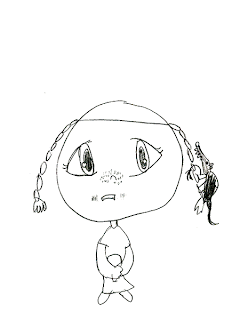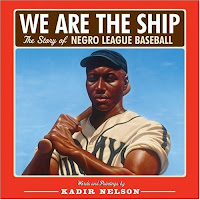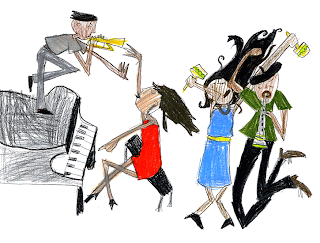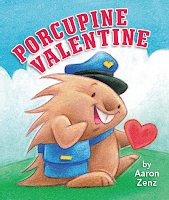
Dad: Today we are taking a look at "Princess Academy" by Shannon Hale. Where should we start? Is there anything you want to say about the plot?
Gracie (age 10): The what?
Dad: The plot. The storyline?
Gracie: New word! Boopity-boop-boo-boo! "Plot!"
Isaac (age 12): The story is mainly about this girl named Miri.
Gracie: She lives on a mountain. The only way her village can live and eat is because they sell linder, which is this really valuable stone.
Dad: They use linder for things like constructing buildings and carving statues.
Gracie: I'm not sure if linder really exists or not. Because it's not in our Rocks and Minerals book.
Dad: You looked for it?
Gracie: Yeah. I actually did.
Lily (age 8): Miri didn't really think she was much use to her family. They wouldn't let her work in the quarry.
Isaac: Everyone has big bulging muscles because they work in the quarry. But for some reason -- it's like a mystery in the book -- for a reason that I'm not going to tell you, Miri's dad won't let her work. So Miri feels puny and worthless because of that.
Lily: The girls that live on the mountain go to an academy. Only girls. They are all going to be trained to be princesses. But the prince is going to choose just one.
Gracie: At the academy they have a really mean teacher! She locks them in a closet!
Lily: Miri disobeyed the rules. So she went to the closet and everybody forgot about her. And there was a rat! A big, furry rat! It was making a nest in her hair.
Dad: Ew!
Lily: They totally forgot about her. She was lucky that someone finally remembered about her.
Dad: And how did Gerti finally remember Miri was in there?
Lily: She used "quarry speech." You see, the quarry workers use it to talk to each other. Like in emergencies.
Isaac: Because it's so loud when they are linder mining, the quarry workers can sing a song in their mind to each other.
Lily: They don't tell warnings with their mouths. They tell them with their hearts.
Dad: So it's a little bit like reading minds. They send email messages with their brains.
Lily: And their hearts.
Isaac: But the lowlanders -- the people who don't live on the mountain -- can't do quarry speech. So that's another mystery that they have to figure out. How quarry speech actually works, and why sometimes they can do it and sometimes they can't. There's like a billion mysteries in here.
Dad: Isaac, were you worried this book was going to be too "girly" when we started?
Isaac: Yes. I got through the first parts because it sounds so much like a historical fiction book. Even when there are little bits of magic, it makes sense how it works.
Dad: And you like books that sound historical.
Isaac: I thought the first part was just interesting. But then the story got very, very, extremely exciting. This thing happens - I don't want to give it away. But everyone gets in danger, and it's really exciting. I was on the edge of my seat while I was listening.
Dad: So would boys like this book?
Isaac: I don't know. I liked it. It gets exciting if you stick with it. But honestly, I think most boys -- I think my friends -- would have different opinions if they read it.
Dad: Fair enough. Now here's what I'd like to do. I want to see if you can tell me some of the changes that took place during the story. For instance, did Miri like the academy at the beginning of the book?
Lily: No.
Dad: Did she like it at the end of the book?
Lily: Yeah.
Dad: So what is that called? A...
Lily: Uhhhhhhhhh...
Dad: ...change.
Lily: "Change." I thought there would be a big fancy word for it.
Dad: No, no. I just want to see if you can think of changes that took place. But I'll teach you a word... A good story has what's called an "Arc." It can be boring if a story is like a flat line -- if everything at the beginning of the story is the same as in the middle and at the end. But if a story has an Arc, if people change over the course of the book, then that makes for a far more interesting story.
Lily: Miri didn't really hang out with the girls much at the beginning. But then she hanged out with everybody!
Gracie: She got really popular.
Dad: And who was responsible for that?
Gracie: Miri worked at it.
Dad: What else?
Gracie: All the mountain people hated lowlanders. But by the end, they realized lowlanders weren't that bad.
Dad: And who was responsible for that change?
Isaac: Miri!
Dad: So she made the changes happen. That's a second thing that makes a story interesting. Things shouldn't just happen TO a character, but instead the character should be the one who helps make the changes come about.
Lily: At the beginning Miri felt like a teeny itsy bitty little baby. At the end she felt old enough to do stuff.
Isaac: She figures out how quarry speech works, and they use it a lot, and it helps them out in dangerous times. By the end they realized how important it is.
Lily: Miri didn't really speak up that she loved Peder at the beginning. But at the end she did a teeny bit. She didn't tell him that she loved him. But they held hands. Hee hee hee!
Isaac: At the beginning they hated the Academy.
Gracie: At the end they thought, "Wow - I can't believe we would have gone all our lives not knowing this awesome stuff!"
Dad: See, once we get going, we find changes everywhere. And who is the main person that causes the changes?
Lily: Miri.
Dad: So that's a lesson to learn about good writing. Stuff happens, obviously. But above and beyond events taking place, you want a change to go on inside a person. The best books don't have characters who are just moving through events -- they are also growing along the way. And the best authors know it shouldn't be passive -- audiences like to read about characters whose own choices create changes.
Gracie: I have one more thing to say.
Dad: What's that.
Gracie: I made a linder block out of snow.
Dad: Yeah, you and Lily and I were playing "Princess Academy" out in the yard.
Gracie: We made a big block of snow and pretended we were carving a block of linder. It took a while. I don't know how the Eskimos do it.
Dad: You guys were even trying to do quarry speech.
Gracie: Our neighbor friend was playing too, even though she had no idea what the heck we were talking about.





























